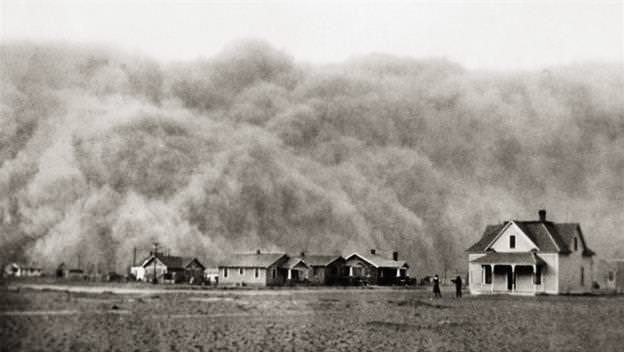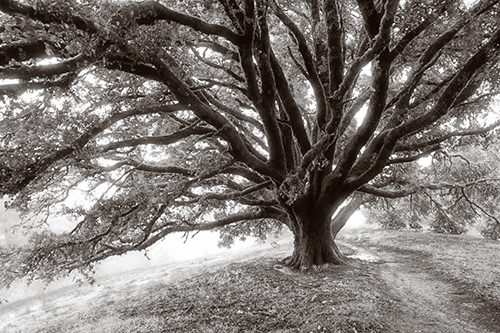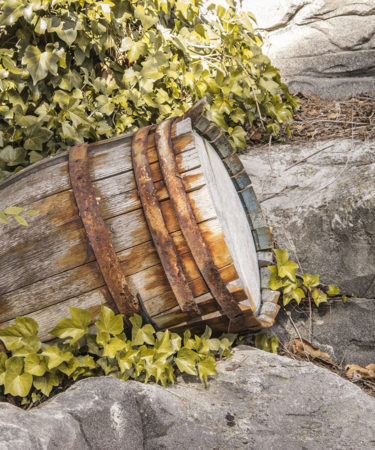We love our vintage clothes and Thanksgiving leftovers and eco-friendly upcycling. So why is it America insists on a new white oak barrel every time a little bit of bourbon needs some aging?
That’s a good, and complicated question. And like any complicated question, it has a few possible answers, ranging from the Great Depression to basic quality assurance to yes, the profoundly crooked early 20th Century American lumber industry. (Kidding. Sort of.)
Considering the immense popularity of bourbon whiskey, you probably already know that all bourbon must be aged in “charred new oak cooperage,” aka barrels. (There are certainly more bourbon rules, and bless them, but that’s the one we’re concerned with now.) The actual ruling we’re talking about was enforced on July 1st, 1938 by the Alcohol and Tobacco Tax and Trade Bureau. The major question is why, if not out of a simple hatred of trees…
Let’s look back, ideally monocled with a tumbler of bourbon in hand, to history—first to the economic collapse following the stock market crash of 1929. As anyone who actually read The Grapes of Wrath for summer reading will remember, the Great Depression found millions of devastated Americans unwillingly out of work. In fact, less than five months after the crash, 3.2 million people were already jobless.
These being the days before Kickstarter, unemployed Americans had to stand on literal bread lines; farmers were forced to uproot themselves, abandon land and trade, and go anywhere in search of work. And with all that farmland unplanted, we got the Dust Bowl…but that’s a story for another day. FDR created the Works Progress Administration to restore employment, but by 1938, industry was still sufficiently lagging for the president to request a massive $3.75 million in government spending to goose the economy.

Among the lagging industries: timber. Turns out the timber industry has been fairly active in Congress for much of the 20th Century, tickling and needling around for tax breaks and subsidies starting in the 1920s. (The lobbying was so bad that when the unstoppable FDR tried to veto a major expansion of the tax breaks in 1943, he—and later Kennedy, and then Carter—failed.) We won’t get in above our heads here, lest the timber industry try to use their influence on us—and splinters are a son of a bitch—but suffice to say, lobbying from a timber industry looking to increase jobs and revenue may well have influenced the 1938 ruling dictating the use of “charred new oak.”
There is also a modest and chemically sound argument to be made that the new oak was, and remains, a better vessel for bourbon aging—not simply because of all those yummy chemical interactions, but because white oak is more watertight than other timber, meaning barrels made from it wouldn’t allow for too much leakage and oxygenation. Bear in mind—and prepare to have it blown—bourbon doesn’t have to be aged in American oak specifically. It just was historically, because we were all on boats and horses back in the day (the “Pappy” of Pappy Van Winkle started his career selling low-grade bourbon from a horse and buggy) and we couldn’t get our hands on French oak the way Buffalo Trace recently did for its Experimental Collection.
Regardless of where it’s from, oak tends to have a variety of good compounds—stuff like hemicellulose (responsible for that caramel factor), tannins (same job as in wine), and oak lactones (which give the bourbon some of that transporting coconut shell flavor). As for why you can or should justify a one-time use only policy, the idea is that upon repeat use, the chemical interaction between whiskey and all those delicious wood compounds will lessen, yielding a duller product. Thus, quality control—and good ol’ fashioned American pride—dictate a once-and-done with bourbon barrels.

That might seem incredibly wasteful, and it would be, had there not emerged a powerful and delicious symbiosis between the American bourbon industry and the (then) fledgling post-war Scotch and Irish whiskey industries. If you squint really hard—or, yeah, just zoom in—under the column “Wants In Cooperage Lines” in the National Cooper’s Journal of August 1920, you can see that a Scottish company called Melrose & Richards was in the market to buy “in large or small quantities used sherry, wine and whisky casks.”
According to Scotch distillery Bruichladdich (don’t be scared, here’s how you pronounce it), “Scottish distillers grew to rely on second-hand casks,” and had actually been doing so for centuries. Prior to the early 20th Century, Scotch was aged in used wine, sherry, and Madeira casks—made with European oak. Once American bourbon barrels became available, the character of Scotch began to change significantly. “Celebrated writer and gastronome” George Saintsbury noted the change in 1920. “‘The older whiskies were darker in colour, from being kept in golden Sherry or Madeira casks, rather sweeter in taste, and rather heavier in texture; the newer [whiskies] are lighter in both the first and the last aspect, and much drier in taste.’”
Bruichladdich also notes the influence of a “powerful Coopers Union.” And while it’s hard to imagine a bunch of barrel artisans hanging out in some kind of Timber Tammany Hall, there’s also the fact that “around 97% of all Scotch whisky is maturing in American oak.” Not to mention the myriad other bourbon barrel-aged products (ever stood on line for Bourbon County Stout?).
Looks like the “new oak” rule, whatever its origins, isn’t wasteful, and is actually good for commercial cross-pollination. But can bourbon barrels, and mighty oak trees keep up with that demand for something bright and shiny (in this case charred) and new? According to our depressing friends at the Wall Street Journal, maybe not. A 35% surge in bourbon consumption since 2010 has put a ton of stress on barrel makers. (You know that craft bourbon you’re drinking? Yes, it required a tree or two.) And while there’s plenty of white oak to chop down – the recession took a toll on the logging industry—there are fewer loggers to actually harvest the stuff.
Meaning new oak barrels are more expensive than ever. They’re also the law.
